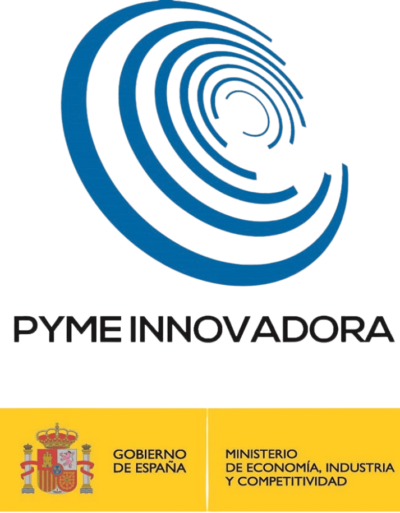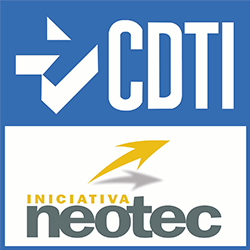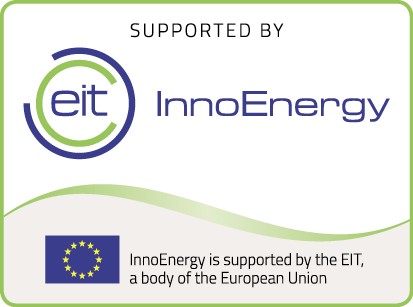Frequently Asked Questions
On cloudy or foggy days, solar installations continue to produce energy proportionally to the existing irradiation.
Global irradiation has three components: direct, diffuse, and albedo. The direct one is the one that casts shadow, the diffuse one is the one we see on cloudy days and the albedo one is the irradiation that is reflected from the adjoining surfaces.
On cloudy days we only have diffuse irradiation, which is approximately between 15 to 20% of the global irradiation. Therefore, the production of the solar installation will be proportional to the available irradiation.
With the current regulatory framework, last year in Spain the number of self-consumption photovoltaic installations increased substantially. Currently, there is the royal decree of self-consumption which has three types of tolls (fixed term, variable term and access rate), and two types of classification, type I (self-consumption without discharge to the network) and type II (designed for sale to net).
It is completely legal. The legalization procedure is different depending on the size of the installation, contracted power, type of electrical configuration, region and electrical distributor.
Our panels have the characteristic of producing electricity and hot water simultaneously in a single panel. Depending on the system’s working temperatures, the photovoltaic production of the hybrid panels can be increased by up to 12%.
Through our monitoring, our clients have access to the information of the solar installation, seeing the energy and economic savings in real time.
The monitoring allows knowing all the necessary parameters to be able to carry out a correct follow-up of the installation, allowing to maximize the useful life of our panels and to minimize or cancel possible incidents.
We also give the possibility of integrating this with the end user’s website so that their clients see how much is saved in CO2 emissions to the planet, in order to show its sustainability.
Our aH60 hybrid solar panels have a thermal power of 1000W and a photovoltaic power of 260W.
The materials of our panels meet the highest quality standards and are supplied by suppliers from the European Union. In the development of our panel, great care is taken to minimize the impact of the carbon footprint in its entire cycle, from the manufacturing process to its supply.
Abora is 100% committed to offering the highest quality in its products, therefore, all our panels are tested and reviewed before leaving the factory, in order to reduce to the maximum any fault or defect they may have.
Abora’s technical department recommends the installation of a hybrid monitoring system (which integrates thermal and photovoltaic production) in order to perform proper maintenance.
Thanks to the monitoring system, both preventive and predictive maintenance of the installation can be carried out, extending its useful life and ensuring energy and economic savings.
For more information see our maintenance manual.
The photovoltaic production of a hybrid panel is conditioned by the temperature range of the hydraulic circuit. If the operating temperature is lower than that of a photovoltaic panel under normal conditions, the electrical production of a hybrid panel will be increased and vice versa. For this reason, it is necessary to correctly size the installation, achieving an appropriate working temperature range throughout the year.
It is recommended that thermal output does not exceed thermal demand. This will mean that the maximum working temperature of the installation does not reach 60⁰C and therefore the cell temperature is lower in a hybrid panel than in a photovoltaic panel.
Of course it is recommended, thus we protect the panels and the installation from overheating, avoiding reducing their useful life. Thanks to the air heater, both the panels and the other components of the installation are protected, preventing them from exceeding 85ºC inside the panels.
Yes, although it is recommended in installations with low temperature emitters. Contact us to study your case, since each one has its peculiarities.
They are suitable in installations where hot water is consumed (DHW), and also want to produce electricity to save costs, without depending on the variation in supply prices.
Examples of facilities: Hotels, Residences, Industries, Sports Centers, Campsites, Farms, Multi-dwelling, Hospitals, Car Washes and Single-family Houses.
Yes, since we preheat the water and then take advantage of the electricity produced by the panels to operate the aerothermal system.
Thermodynamics consume electricity, and hybrid panels generate electricity. Thus achieving an important difference when it comes to obtaining savings and amortization of the installation.
Totally, since the panels have very good performances when working at low temperatures, and also with the electricity generated, we supply the electrical equipment for the pool installation.
In summer it is necessary to install dissipation elements (air heaters), so that the installation does not reach maximum temperatures. Another option is to send the excess hot water to a pool which dissipates the excess heat.
Our network of installers covers the entire national territory and are professionals approved by Abora for the correct installation of the panels.
Abora has sales points throughout the national territory, contact us.
An example, if we put ourselves in a situation of a senior residence of 150 users in Madrid, with an installation of 50 aH60 panels we would cover 60% of the thermal demand and we would have 13.25 kWp of photovoltaic energy. With this, we would save € 9,800 the first year, amortizing the solar installation in 5.3 years. Achieving a cumulative cash flow of over € 400,000 over the life of the facility.
There are different options:
Pour the spare energy into the network: It is the most economical option since it does not need the installation of any additional component. The electricity poured will not be remunerated by the electric company.
Install a zero injection system: This system will regulate the operation of the inverter to adjust to electricity consumption and will prevent it from overpowering and spilling into the electrical grid. In the case of hybrid panels, all the energy that is not produced in the form of electricity is produced in the form of heat, increasing the performance of the thermal part.
Install accumulation batteries: With this solution, the excess electrical energy is stored throughout the day to be used at night. This together with a contract with time discrimination will allow us to maximize energy savings. The initial investment will be greater than in the two previous options.
Yes, in fact, it is recommended to replace deteriorated thermal panels with hybrid aHTech® technology, because they also produce electricity, making the installation profitable much earlier, and achieving greater savings.
Write us, we will answer you as soon as possible.
Responsible for the data: Abora energy S.L.
Purpose: Sending emails with news and offers.
Legitimation: Your expressed consent.
Recipient: Subscribers’ list in Mailchimp.
Rights: Access, rectification, elimination, anonymity, portability and forgetting data.










